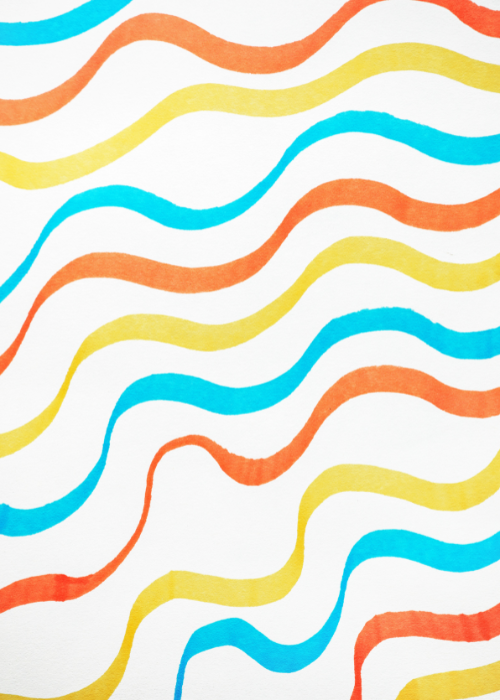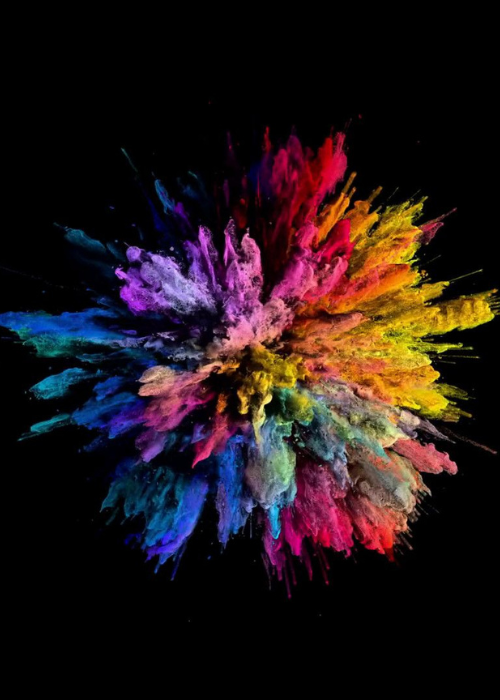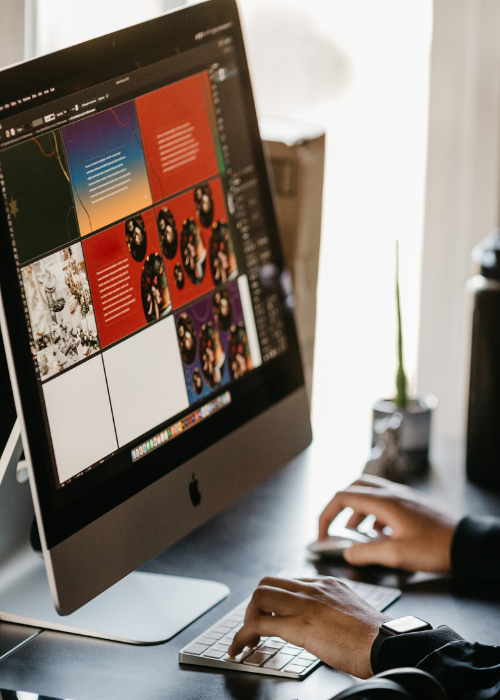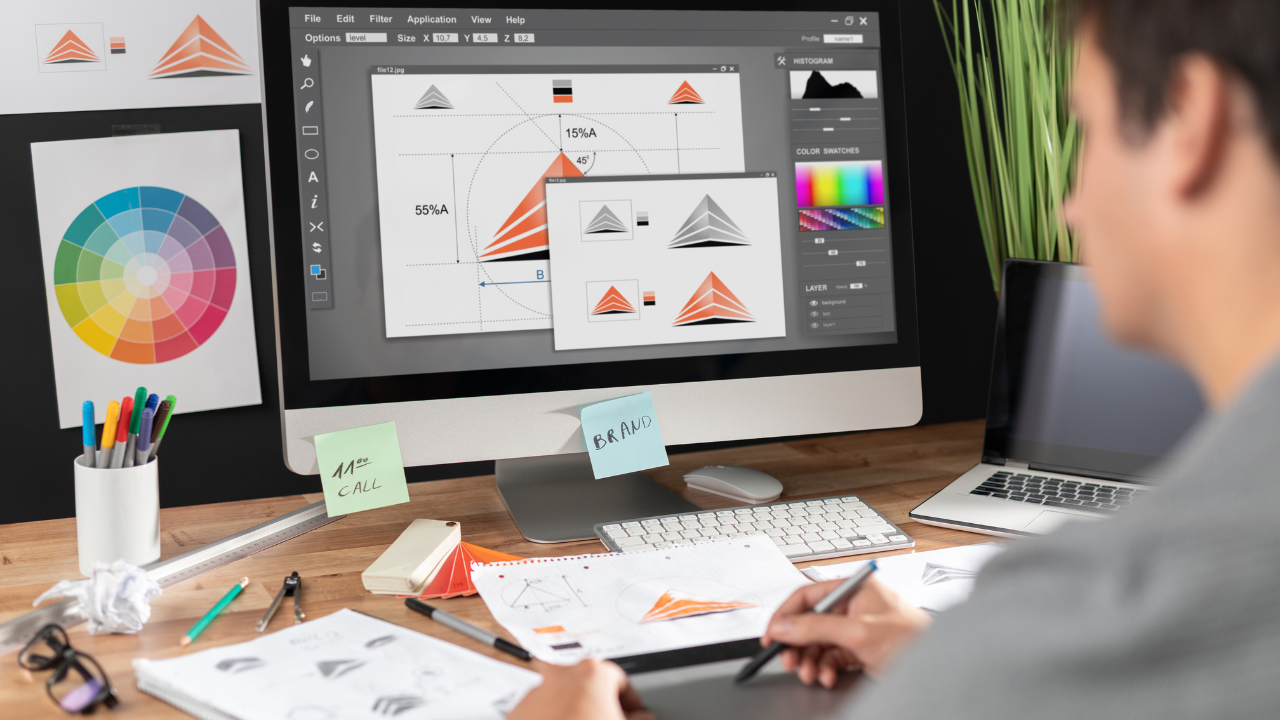Elements and Principles of Design
What are design elements?
Design elements are the basic units of visual design.
7 Elements of Design
Point
The simplest element of visual design. It serves as the focus of something visual, and draws attention.
Line
It is simply a mark that connects two points. It can work with other lines to create an illusion of distance, space, and depth.
TYPES OF LINES
● Contour Line
– It is an outline of the exterior edges of a shape or a certain illustration.
● Straight Line
– It is an endless one-dimensional figure that has no width. A combination of endless points joined on both sides of a point.
● Curved Line
– The lines that bend and change direction gradually. It can be simply as wavy or spiral.
● Zigzag Line
– A series of diagonal lines joined at ends. It is made of a combination of straight diagonal, vertical, and horizontal lines.


Space
It refers to the area that a shape or form occupies. It also refers to the background against which we see the shape or form.
2 TYPES OF SPACE
● Positive Space
– The area or part of the composition that an object or subject occupies
● Negative Space
– A space that is empty or open space that surrounds an object.
Shapes
– It is an element of design which is a combination of lines, points, and spaces.
3 Basic Types of Shapes
1. Geometric Shape – These are closed figures created using points, line segments, circles, and curves.
Some of the meanings associated with some basic shapes.
● Circle – represents infinity, harmony, and perfection
● Square and rectangle – send a message for security and stability
● Triangle – associated with dynamic tension, aggression, and energy
2. Natural Shapes – It is associated with nature. They often look similar to things found in nature like plants, animals, and rocks.
3. Abstract Shapes – It is the most basic and recognizable aspect of a real life shape and creates a simplified representation of it.


Color
It is a fundamental element in graphic design as it plays a huge role in the design process as they can transmit different feelings and convey messages that the viewer can feel related to.
PROPERTIES OF COLOR
● Primary Color – The colors that are added together and create pure white light. These colors are red, yellow, and blue.
● Secondary Color – These are color combinations created by the equal mixture of two primary colors. These colors are orange, green, and violet.
● Tertiary Color – Formed by mixing a primary with a secondary. These colors are red-orange, yellow-orange, yellow-green, blue-green, blue-violet, and red-violet.
Size
The size of an element can influence how it is perceived. Larger elements tend to be more important, while smaller elements appear less significant.
Texture
An element of design that defines the surfaces of shapes and forms.
TYPES OF TEXTURE
● Tactile Texture – can be felt physically
● Visual Texture – creates an illusion of texture on a printed material or web page.


Principles of Design
It describes the ways that artists use the elements of art in a work of art. These are the designer’s guidelines to create a compelling and appealing composition.
5 Principles of Design:
1. Balance – it refers to the equal of distributions of weights, which in design, applies to visual weight.
Two Types of Balance:
● Symmetrical – The elements used one on one side of the design are similar to those on the other side.
● Asymmetrical – uneven arrangement of elements such that one side of a design has more weight.
2. Contrast – the most effective way to create emphasis and impact with your design. It is created when two elements are total opposites. For example: Notebook II by Imprimerie du Marais
3. Emphasis – The distribution of heavy and light elements in a design.
4. Rhythm – The repetition of one or more elements in a design.
5. Unity – It refers to how well the elements of a design work together.

Image File Format
Image File Format refers to the specific types of files used to store and display images.
Types of Image Files
1. Graphics Interchange Format (GIF) – the most usable file format for the web, it is also the first file format supported by web browsers.
2. Portable Network Graphics (PNG) – it represents images with a transparency effect which allows images to overlap.
3. Joint Photographic Experts Group (JPEG) – designed to efficiently store high quality digital photos packed with detail and color.
4. Portable Document Format (PDF) – a file format developed by Adobe with the goal of capturing and reviewing information from any application, on any computer, with anyone, anywhere.
© 2024 Learning Empowerment Technology | All Rights Reserved
Privacy Policy | Terms and Conditions | Disclaimer
This site is not a part of the Facebook website or Facebook Inc. Additionally, this site is NOT endorsed by Facebook in any way. FACEBOOK is a trademark of FACEBOOK, Inc.

